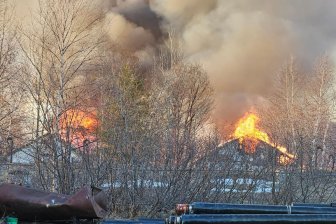Warning: Some of the details in this story may be disturbing to some readers. Discretion is advised.

The horrifying discovery of the remains of more than 200 children came from a survey of the Kamloops Indian Residential School grounds by a private firm using ground-penetrating radar.
“These school plans included cemeteries,” Andrew Martindale, a professor at the University of British Columbia’s Dept. of Anthropology, said. “Who builds a school with a cemetery attached? Well, the Canadian government… did so.”

GeoScan, a B.C. company that specializes in using ground-penetrating radar, was not part of the project in Kamloops but the company has helped with many archaeological investigations with Indigenous groups in the past.
“It’s important for us to be a part of that process and lend our expertise and make sure that a full, comprehensive survey is performed,” GeoScan operations director Joseph Salazar said.
As useful as this technology might be, GeoScan says it’s important to understand its limitations. Ground-penetrating radar, magnetometry and even electromagnetic conductivity don’t work like an X-ray.

While they can determine depth, shape and size, there is still much that remains secret beneath the soil.
“It’s not going to give you a black-and-white answer, but it’s going to pinpoint to the right direction most of the time. It’s not an exact survey,” GeoScan lead technician Peter Takacs said.
While some conclusions can be drawn from the data, experts in the field say there’s only one way to get 100 per cent certainty.
“You would have to dig,” Takacs said. “You would have to do a proper investigation. Nothing will essentially give you better results than daylighting.”

Experts say ground-penetrating radar is often seen as a starting point. What’s needed next for truth, reconciliation and closure is a decision that can only be made by those closest to this tragedy.
If the Tk’emlúps te Secwe̓pemc band decides to excavate the former residential school site to exhume and try to identify the remains, it’s an operation that could take months or even years.
Forensic anthropologists won’t touch a site without full consent and a desire to have the child’s remains identified and possibly returned to their family.

“The identification process is still complicated and long and requires a massive amount of organization, cooperation and information,” says Megan Bassendale of Forensics Guardians International, who has worked at massive gravesites worldwide.
Bassendale has worked on projects in Europe, Central Asia and the Middle East, and says they can be incredibly complex, time-consuming and costly.
Other First Nations are calling for a full investigation into all residential schools and their burial policies as promised in the Truth and Reconciliation Commission report.
“This really speaks to the need for Canada to put in place a proper framework to address the issue of mass graves, unmarked or unrecorded deaths, and to follow what the survivors have been saying for some time,” said Mary Ellen Turpel-Lafond of the UBC Indian Residential School History and Dialogue Centre.

If a decision is made to exhume at the site, it would start with establishing a perimeter of the gravesite through ground-penetrating radar. Once surface soil is removed, it would be a slow, meticulous operation done by hand. Documenting every little detail is paramount.
It could take years to establish a consensus on whether to dig or not to dig. Then it would be a very long process to remove the bodies and identify each one through school data records — if they even exist — dental records, and DNA.
In Bassendale’s experience, a vast majority of families want the remains of their loved ones returned.
“Sometimes they’ll see something on the teeth or there’ll be a bump on the head or there’ll be something on the body that they remember happening. They remember, ‘Oh, yeah, he fell off his bike and he chipped his front tooth.”



Comments